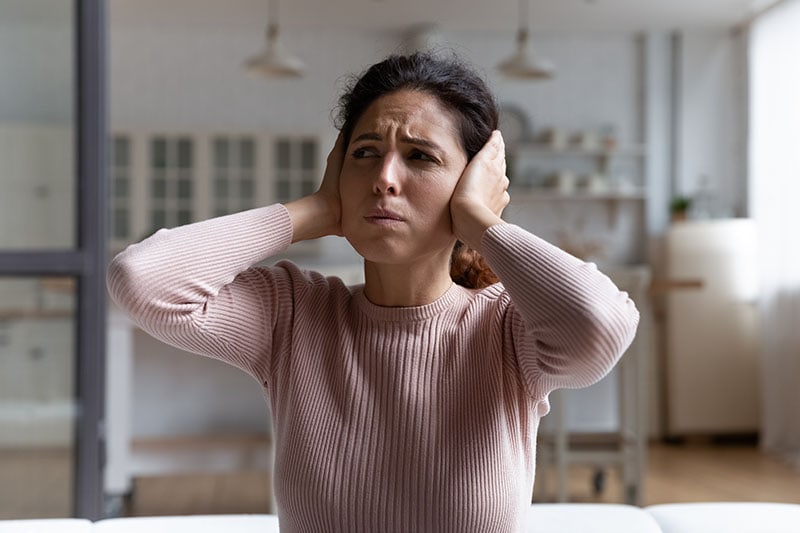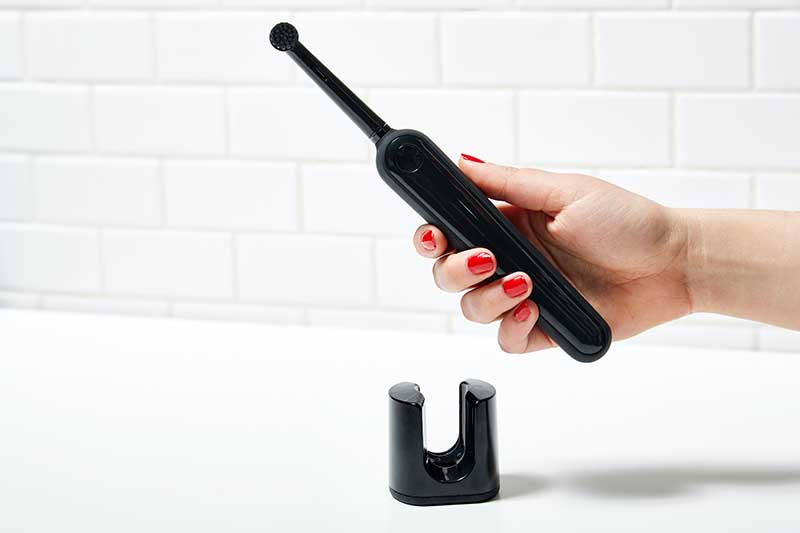How Loud Is 60 dB? Decibels Explained (With Noise Comparison Chart)
-

- Last updated:

Whether you are walking in the park or working at the office, you can’t avoid noise. The threshold of human hearing is 0 dB, while the threshold of pain where the sound is so powerful it will hurt your ears is between 120–140 dB. The middle ground of this range between tolerable and painfully intense is 60 dB, so how loud is it?
60 dB can be compared to the loudness of a normal conversation, but it helps to compare it to other sounds to gauge it and understand how the decibel scale works, so let’s get into it.
What Is a Decibel?
Let’s start with understanding precisely what a decibel is. A decibel, or dB, is a unit that measures the intensity of sound. The average ear can hear anything from a pin drop to the amplified sounds of the subway.
The decibel scale is described as logarithmic, which means that each time it increases, it rises by a power of ten. The slightest sound is measured at 0 dB, so a sound that is 10 times more powerful will be 10 dB, and so on.

What Do 60 Decibels of Noise Sound Like?
So, if a sound is measured at 10 dB, it is ten times louder than 0 dB. Therefore, 20 dB will be 100 times louder, 30 dB will be 1000 times louder, 40 dB will be 10,000 times louder, and 100 dB will be 1 billion times louder than silence.
Describing how loud 60 dB may sound can be difficult because every sound is so different and how loud we may perceive it depends on several elements. The intensity that an individual perceives sound is determined by where it’s coming from, what it’s coming from, and how long you can hear it.
60 dB is about as loud as a conversation between two people about a table length apart. Generally, an office or restaurant sound is measured at about 60 dB. But if you compare that to a ceiling fan that can measure 60 dB, it is not the same. People talking can be a range of sounds that change, whereas a fan spinning is a constant sound.
The volume of 60 dB will affect people differently because people have different sensitivities to sound. So, if we compare the sound of conversation and the ceiling fan again, some people won’t tolerate the sound of talking, while some may find the fan calming. Furthermore, the sound of people talking can be very distracting and impair concentration, so 60dB produced by the fan may not seem loud, while 60 dB created by people talking can seem very loud.
This table compares the dB levels of different noise sources to help you understand how loud 60 decibels can be:
| Decibel Level | Sound Source |
| 20 dB | Regular breathing |
| 30 dB | Nearby whispering |
| 50 dB | Refrigerator |
| 60 dB | Electric toothbrush |
| 70 dB | Vacuum cleaner |
| 75 dB | Lawnmower |
| 80 dB | Alarm clock |
| 90 dB | Subway train |
| 100 dB | Music concert |
| 109 dB | Chainsaw |
| 110 dB | Car horn |
| 120 dB | Baby crying |
| 120 dB | Fireworks |
| 140–165 dB | Gunshot |
| 165–180 dB | Thunder |
Can 60 Decibels Damage Your Hearing?
When a person’s hearing is damaged, it can be due to a brief exposure to a deafening sound or prolonged exposure to various loud sounds. The loud noise damages the cells and membranes in the cochlea of the inner ear. Hearing loss caused by noise can be temporary or permanent.
Sound ranges above 85 dB for longer than 8 hours a day are considered harmful to human hearing, as well as short exposure, such as a deafening bang at 120 dB. Therefore, 60 dB is considered safe for human hearing. Below is an electric toothbrush, which is measured to be 60 dB.

How Can You Measure the Noise Level?
You may now understand that noises can reach harmful levels very quickly, and many people’s occupations can expose them to high noise levels daily for up to 8 hours. Examples of occupational sound hazards include subway trains, chainsaws, and lawnmowers.
It may be beneficial to measure the sound levels you are exposed to, especially if you are experiencing hearing loss. To measure sound levels, a sound meter can be used. It uses an external microphone to capture and measure the sound and is a compact handheld device. However, they can be pretty expensive.
A more convenient way to measure sound is to download an app on your smartphone that can measure sound.
Noise-Induced Hearing Loss Prevention Tips
Hearing loss can be caused by many factors and varying degrees of intensity, regardless of age. You may not notice the change immediately, but you may experience trouble hearing later.
We are constantly surrounded by noise, but noise-induced hearing loss can easily be avoided. Understanding the harm of loud noise exposure can help you and your family prevent hearing loss.
- Educate yourself and become aware of what loud noises can cause harm. You can avoid or limit your exposure time to these sounds.
- Check the volume on your TV and music.
- Spend less time at concerts, busy events, and cinemas, and use ear protection when you do attend these functions.
- When purchasing appliances, check the decibel levels.
- If you have been to a place where you have been exposed to noise for long periods, give your ears a long rest.
- Take care of your young kids and protect their ears with earplugs.
- Always use ear protection if exposed to sounds over 85 dB.
Conclusion
While silence is measured at 0 dB and the threshold for pain-inducing sound is around 120 dB, 60 dB is a good middle ground. While various factors can influence the degree of loudness of a sound, 60 dB is roughly equivalent to two people having a conversation 3 feet apart. Some may find this extremely loud, while others do not. A noise level of 60 decibels is not harmful to human hearing, but anything above 85 decibels can begin to cause harm, and precautions should be taken to avoid noise-induced hearing loss.
See Also:
- https://www.audicus.com/noise-levels-of-everyday-sounds/
- https://decibelpro.app/blog/how-loud-is-60-db-compared-to-other-volumes/#:~:text=60%20decibels%20is%20as%20loud,a%20restaurant%20or%20an%20office.
- https://decibelpro.app/blog/how-loud-is-60-db-compared-to-other-volumes/#:~:text=60%20decibels%20is%20as%20loud,a%20restaurant%20or%20an%20office.
Featured Image Credit: Fizkes, Shutterstock
Contents


